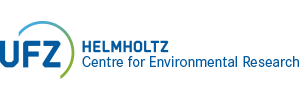Scaling of biochemical and hydraulic controls on nitrate uptake and removal in streams
| Project Name: | Scaling of biochemical and hydraulic controls on nitrate uptake and removal in streams. |
| Headed by: | Prof. Dr. Michael Rode (UFZ), Prof. Dr. Andreas Lorke (RPTU) |
| Personnel | Md Sakline Shawon |
| Funding: | German Research Foundation (DFG), Germany. |
| Period | 01.09.2024 – 31.08.2027 |
| Contacts | michael.rode@ufz.de , a.lorke@rptu.de |
Summary
Nitrogen (N) pollution is a global threat to freshwater ecosystems and the ecosystem services they provide [1]. The nitrogen removal at the stream reach scale is associated with assimilatory N uptake by photoautotrophs and dissimilatory N removal by heterotrophs [2]. Denitrification is the permanent removal of N in the stream ecosystem. However, the experimental quantification of nitrate removal processes in stream compartments (benthic and hyporheic) is lacking, especially for medium-sized streams [3, 4]. Additionally, information on water column denitrification under natural conditions is very sparse. Only a few studies included detailed hydraulic and morphological characterizations and measurements of bed roughness and turbulence of the study reaches [5, 6] but did not consider hyporheic exchange. The negligence of hyporheic exchange is due to the methodological limitations of standard experimental methods, such as isotope addition, which are impractical in medium-sized streams and larger rivers [3, 7]. Thus, to fill the potential gaps, a recently developed Hyporheic Passive Flux Meter (HPFM) will be used for this project to evaluate the nutrient fluxes and biogeochemical processing rates of the reactive sites in the sediments of larger streams. HPFM measurements integrate the temporal fluctuations of the hyporheic nutrient dynamic over several days into a time-averaged flux.
Two working groups will lead the project: Michael Rode’s working group from the UFZ, experienced in investigating matter transport in streams and rivers on different scales; the working group of Andreas Lorke from the University of Kaiserslautern-Landau (RPTU) and this group has been working in environmental fluid dynamics. Six study sites have been chosen for the study/experiment under this project. The project’s main hypotheses and possible experimental approaches are: a) Reach scale denitrification depends on structural complexity: Mass balance model and process-based modeling. b) Seasonal variability of nitrate removal is dominated by biotic activity in the hyporheic zone: HPFM combined with multilevel oxygen, temperature and porewater sampling. Acoustic Doppler Velocity (ADV) & laser scanning, Piezometers. c) water column denitrification is essential in more significant streams: Complete N mass balance model, hyporheic nitrate removal rates, total N removal rates, and water column denitrification. d) The importance of assimilatory N uptake on total removal increases with stream order: GPP, ER, and NEP will be estimated at all study sites and seasons using open channel measurements. The study sites are divided into two stream categories; the natural streams are Lower Selke, Upper Bode, and Weiße Elster, and the anthropogenically impacted reaches are Holtemme, Middle Bode, and Lower Bode.
References:
- Vörösmarty, C.J., P.B. McIntyre, M.O. Gessner, D. Dudgeon, A. Prusevich, P. Green, . . . P.M. Davies, Global threats to human water security and river biodiversity. Nature, 2010. 467(7315): p. 555-561, DOI:10.1038/nature09440.
- Thamdrup, B., New Pathways and Processes in the Global Nitrogen Cycle. Annual Review of Ecology, Evolution, and Systematics, 2012. 43(1): p. 407-428 DOI: doi:10.1146/annurev-ecolsys-102710-145048.
- Tank, J.L., E.J. Rosi-Marshall, M.A. Baker, and R.O. Hall, Are rivers just big streams? A pulse method to quantify nitrogen demand in a large river. Ecology, 2008. 89(10): p. 2935-2945 DOI: 10.1890/07-1315.1.
- Reisinger, A.J., J.L. Tank, T.J. Hoellein, and R.O. Hall, Sediment, water column, and open-channel denitrification in rivers measured using membrane-inlet mass spectrometry. Journal of Geophysical Research: Biogeosciences, 2016. 121(5): p. 1258-1274 DOI: 10.1002/2015JG003261.
- Anlanger, C., U. Risse-Buhl, D. von Schiller, C. Noss, M. Weitere, and A. Lorke, Hydraulic and biological controls of biofilm nitrogen uptake in gravel-bed streams. Limnology and Oceanography, 2021. 66: p. 3887-3900 DOI: 10.1002/lno.11927.
- Risse-Buhl, U., C. Anlanger, C. Noss, A. Lorke, D. von Schiller, and M. Weitere, Hydromorphologic Sorting of In-Stream Nitrogen Uptake Across Spatial Scales. Ecosystems, 2021. 24: p. 1184–1202 DOI: 10.1007/s10021-020-00576-7.
- Covino, T.P., B.L. McGlynn, and R.A. McNamara, Tracer Additions for Spiraling Curve Characterization (TASCC): Quantifying stream nutrient uptake kinetics from ambient to saturation. Limnology and Oceanography: Methods, 2010. 8(9): p. 484-498 DOI: 10.4319/lom.2010.8.484.
